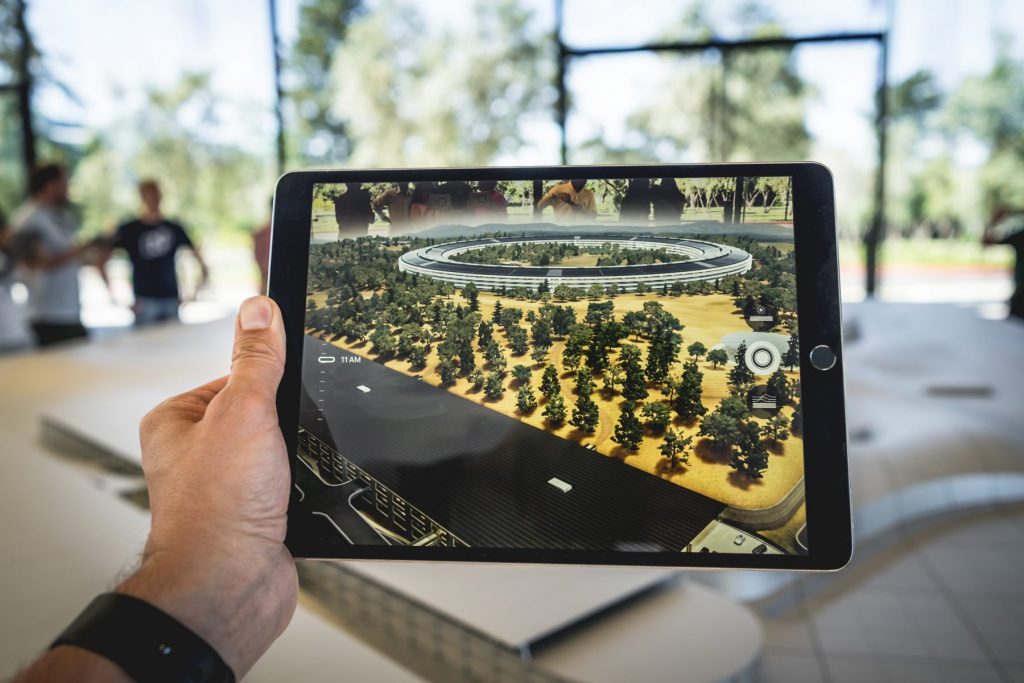
Articles
Editor’s Picks
Trends in Corporate eLearning Part 1: VR, AR and MR in Learning and Training
By Sherman Morrison
January 07, 2019
It wasn’t all that long ago when speculation about the utility of artificial intelligence felt more like science fiction than science fact. Then along came virtual reality (VR), and more recently augmented reality (AR) and mixed reality (MR). Businesses in the brave new digital world have to sort through all these technological developments and figure out which ones will give their corporate eLearning functions the competitive advantage they need to succeed.
In this four-part series about trends in corporate eLearning, I’ll explore whether and how VR, AR and MR are transforming the way learning and training happen throughout the corporate landscape.
Defining Corporate eLearning; VR, AR and MR
Before taking a deep dive into the ways VR, AR and MR are being utilized in companies for more effective corporate eLearning and training programs, it’s important to understand what these three technologies are and what they potentially bring to table.
Virtual Reality: According to the Virtual Reality Society, “Virtual reality is the term used to describe a three-dimensional, computer generated environment which can be explored and interacted with by a person. That person becomes part of this virtual world or is immersed within this environment and whilst there, is able to manipulate objects or perform a series of actions.”
As you might imagine, the ability to put people into an environment that feels real without physically entering that space opens up a huge range of potential scenarios for corporate learning and training programs. eLearning Inside has previously reported on instances of OSHA and even KFC fry cook training imparted largely through VR training exercises.
The big issue then becomes how real does the VR environment need to be? Developing a VR environment that seamlessly interacts with all human senses is no easy feat, nor is it inexpensive. The good news is that there is a full spectrum of less-than-total VR scenarios and environments that might be just right for a wide range of corporate eLearning and training programs.
Augmented Reality: This is one case where the Wikipedia definition is one of the best you’ll find anywhere: “Augmented reality (AR) is an interactive experience of a real-world environment where the objects that reside in the real-world are ‘augmented’ by computer-generated perceptual information, sometimes across multiple sensory modalities …” The sensory modalities most often include sight, but could also include sound, touch or even smell.
If you’ve seen any of the Iron Man movies where you view the action through Tony Stark’s super-suit, you’ve seen his view of the real world augmented by the visual display in his helmet. The Pokémon Go smartphone game marks another version of augmented reality where your view of the real world through your phone’s camera is augmented with computer-generated overlays. In the world of classroom learning, GeoGebra has recently developed an AR graphing and computing app.
Having the ability to instantly superimpose items and information onto an otherwise real environment opens up all kinds of interesting possibilities for corporate learning and training programs.

Mixed Reality: The best way to understand mixed (or hybrid or extended) reality is to define it in relation to both VR and AR. According to the definition offered by WhatIs.com (the best I’ve come across), “Mixed reality (MR) is a user environment in which physical reality and digital content are combined in a way that enables interaction with and among real-world and virtual objects. Unlike virtual reality (VR) which immerses the end user in a completely digital environment, or augmented reality (AR) which layers digital content on top of a physical environment, mixed reality blends digital and real world settings. Mixed reality is sometimes considered a type of augmented reality (AR), but its capacity for interactivity between real-world and digital elements places it further along the virtuality continuum, which has physical reality at one extreme and immersive virtual reality at the other.”
Of the three technologies enhancing corporate eLearning, MR remains the least developed. But it has also already proven itself to be extremely useful in a number of industrial and business applications that include learning and training programs.
Beyond Entertainment: Corporate eLearning Realities and the Future of Learning
While all three of these technologies have been weaving their way throughout society mostly due to their entertainment value in the form of more immersive gaming experiences, their value to the business world largely resides in their ability to transform and enhance the learning and training needs of all kinds of companies.
Alexander Salas, a Learning Experience Designer at Dell, has gone as far as saying, “The future of eLearning is virtual.” However, he also notes that this future for workplace learning has not yet fully arrived. It’s worth noting that one of the things holding this future back from becoming reality today, in his opinion, is the continued dependence of many companies on a learning management system (LMS). Far too many LMS options are woefully outdated compared to what is needed to leverage VR, AR and MR in corporate learning programs, including advanced web analytics and experience application programming interfaces (xAPIs). There will no doubt be LMS vendors who try to meet the challenge, but his point is that it can be met entirely outside any kind of LMS.
In the remaining three articles about these corporate eLearning realities, each will focus on one of the three technological realities to provide examples of how they are currently being used in a range of companies to greatly enhance workplace learning and training programs.
Featured Image: Samson Creative, Unsplash.









4 Comments